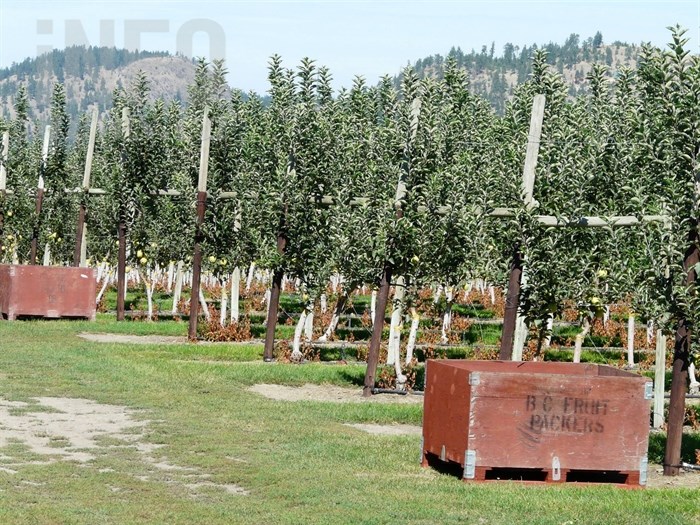
(HOWARD ALEXANDER / iNFOnews.ca)
November 29, 2020 - 6:00 PM
Lower cherry crops may have disguised the true impact of an ongoing agricultural issue in the Okanagan, according to a BCFruit Growers Association newsletter.
“The year 2020 was very unusual for farm labour - on one hand, the pandemic temporarily halted travel and reduced the number of foreign workers coming to Canada.” Glen Lucas,General Manager
wrote in the newsletter.
“On the other hand, the low cherry crop in 2020 resulted in reduced farm labour demand. This mixed bag could hide the real nature of the labour shortage.”
For 2021, he said, if there is a normal or a higher-than-normal crop of cherries and if there is the same, lower labour supply, the shortage of harvest labour will be severe in the Okanagan.
While the pandemic curtailed international travel, the issues with harvest labour were more widespread with the labour supply in 2020 being down from 2019 in all areas.
Lucas explained Okanagan Seasonal Agriculture Worker Program number were down from about 7,500 to 4,250 from 2019 to 2020.
“The Okanagan has, over the past five years, seen a growing number of young workers from other countries coming to work on farms,” Lucas said.
“The pandemic essentially shut down this program.”
The number of international backpackers who work on farms in the Okanagan probably declined from 1,500 to 500 from 2019 to 2020. The number of domestic workers, especially from Quebec, were down significantly, between 30 and 50 per cent of 2019 levels, from 1,500 to 750.
Overall decline in working on Okanagan farms was 3,250, to a level that is 57% of the normal workforce in 2019 .
“The appeal to local unemployed people to come work on farms was not very successful,” Lucas wrote.
“Those who did commit to staying to the end of the season and were capable of meeting the challenge of the physical work were appreciated, but very limited in numbers. Unfortunately, the experience was that most of the local workers that did apply for farm work were generally either ‘one-day’ employees, or were elderly (and very well-meaning) and limited in their capacity to work.”
The need to work the issue out is paramount given that Lucas said the cherry production levels are expected to return to and grow beyond levels in 2019.
Apple production will be less due to a reduction in acreage.
“This amount is not yet known but will likely exceed the four per cent reduction from 2019 to 2020 - but it will still not make up for the labour shortage of 38 per cent,” he wrote.
“There will be a need for a large increase in SAWP workers, especially for cherry harvest, in the Okanagan in 2021. In order to have adequate labour, an increase from the reduced numbers in 2019 is required.”
Lucas said that assuming that backpacker numbers will again be down due to ongoing COVID-19 travel restrictions, it is projected that the tree fruit growers will need an increase of 50 per cent in Mexico SAWP numbers and 300 per cent in Caribbean SAWP numbers to reach the same level of employment in the industry as in 2019.
To contact a reporter for this story, email Kathy Michaels or call 250-718-0428 or email the editor. You can also submit photos, videos or news tips to the newsroom and be entered to win a monthly prize draw.
We welcome your comments and opinions on our stories but play nice. We won't censor or delete comments unless they contain off-topic statements or links, unnecessary vulgarity, false facts, spam or obviously fake profiles. If you have any concerns about what you see in comments, email the editor in the link above.
News from © iNFOnews, 2020